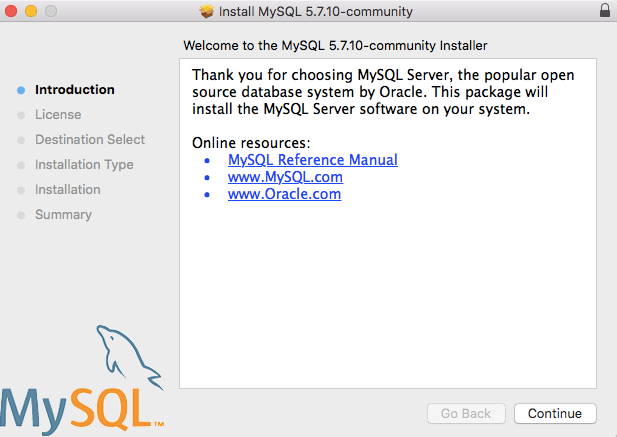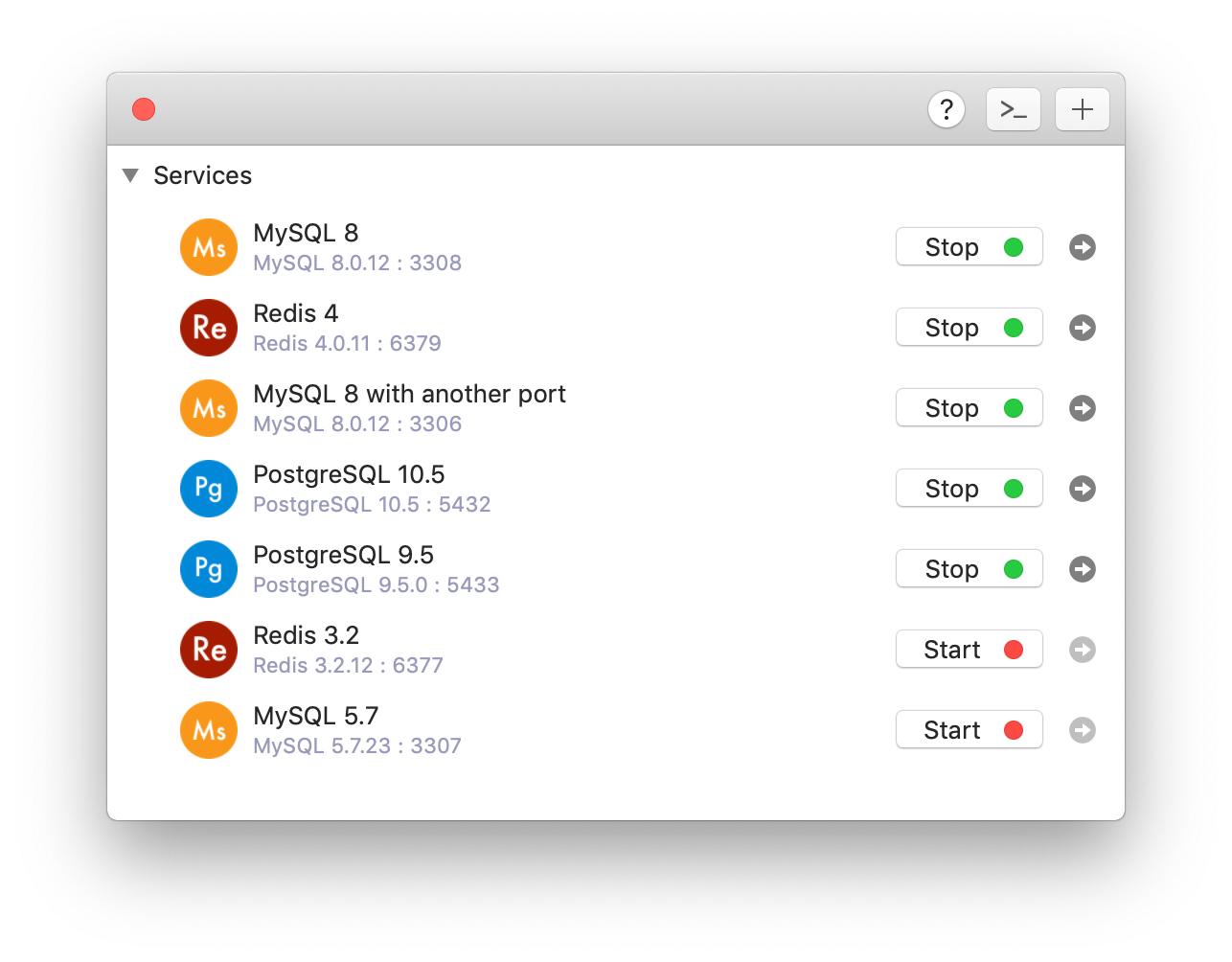
- Installing and Running MySQL on macOS / Mac OS X. The first step in setting up a MySQL database server on your Mac is to download the MySQL installer. MySQL offers a free edition called the MySQL Community Server. Click the link below to be taken to the download page for the MySQL Community Server.
- The MySQL server is installed on the Mac, but it does not load by default. Start MySQL by clicking Start using the MySQL Preference Pane, which was installed during the default installation. You can configure MySQL to automatically start when you turn on your computer using the MySQL Preference Pane.
- MySQL for macOS is available in a number of different forms: Native Package Installer, which uses the native macOS installer (DMG) to walk you through the installation of MySQL. For more information, see Chapter 2, Installing MySQL on macOS Using Native Packages. You can use the package installer with macOS.
MySQL is a relational database management system. MySQL is the widely used database server in the world. This tutorial helps you to install MySQL database server on macOS Sierra 10.12 and High Sierra 10.13 and other supported versions using Homebrew.
Install MySql Database Server On Mac. Download MySql Server community version for macOS.; Click the downloaded dmg file to open the MySql server installer package. Click the Next button in the wizard dialog until go to the Change Install Location dialog, then click the Install button to install it. Sudo apt-get update sudo apt-get install mysql-server. Installing MySQL on MAC: Official Guide. During installation, you will be asked to set up root password. Make sure you keep a note of the.
Step 1 – Prerequisites
Download Mysql Server
Before starting the installation of MySQL using this tutorial you must have the following prerequisites
- Terminal: You must have Mac Terminal access and little knowledge about working with the terminal application.
- Homebrew: Homebrew is a popular package management tools used for installing most open source software like Node. Here is the Homebrew installation tutorial
Step 2 – Install MySQL on macOS
At this time of writing this tutorial, Homebrew has MySQL 5.7.21 version in its main repository. Start a terminal and run command to install MySQL:
Wait for the installation process finish. Now you just need to configure things so that your MySQL server is auto-started
Also, you have to set a strong password for the MySQL root account. Use the following command to set a new password. Make sure to use a strong password.
Step 3 – MySQL Configuration

Install Mysql Server And Workbench Mac
MySQL server has been installed on your system. The binary files are installed under /usr/local/bin directory and all the MySQL related files are created under '/usr/local/var/mysql' directory. The main confiugration file is created at:
You can use above file to customize your MySQL server. Now, Connect to MySQL server using the command:
Step 4 – Manage MySQL Service
There are mysql.server command available under /usr/local/bin directory, which is used to manage MySQL service. You can use mysql.server command with options status, stop, start, or restart MySQL service on your system.

- Installing and Running MySQL on macOS / Mac OS X. The first step in setting up a MySQL database server on your Mac is to download the MySQL installer. MySQL offers a free edition called the MySQL Community Server. Click the link below to be taken to the download page for the MySQL Community Server.
- The MySQL server is installed on the Mac, but it does not load by default. Start MySQL by clicking Start using the MySQL Preference Pane, which was installed during the default installation. You can configure MySQL to automatically start when you turn on your computer using the MySQL Preference Pane.
- MySQL for macOS is available in a number of different forms: Native Package Installer, which uses the native macOS installer (DMG) to walk you through the installation of MySQL. For more information, see Chapter 2, Installing MySQL on macOS Using Native Packages. You can use the package installer with macOS.
MySQL is a relational database management system. MySQL is the widely used database server in the world. This tutorial helps you to install MySQL database server on macOS Sierra 10.12 and High Sierra 10.13 and other supported versions using Homebrew.
Install MySql Database Server On Mac. Download MySql Server community version for macOS.; Click the downloaded dmg file to open the MySql server installer package. Click the Next button in the wizard dialog until go to the Change Install Location dialog, then click the Install button to install it. Sudo apt-get update sudo apt-get install mysql-server. Installing MySQL on MAC: Official Guide. During installation, you will be asked to set up root password. Make sure you keep a note of the.
Step 1 – Prerequisites
Download Mysql Server
Before starting the installation of MySQL using this tutorial you must have the following prerequisites
- Terminal: You must have Mac Terminal access and little knowledge about working with the terminal application.
- Homebrew: Homebrew is a popular package management tools used for installing most open source software like Node. Here is the Homebrew installation tutorial
Step 2 – Install MySQL on macOS
At this time of writing this tutorial, Homebrew has MySQL 5.7.21 version in its main repository. Start a terminal and run command to install MySQL:
Wait for the installation process finish. Now you just need to configure things so that your MySQL server is auto-started
Also, you have to set a strong password for the MySQL root account. Use the following command to set a new password. Make sure to use a strong password.
Step 3 – MySQL Configuration
Install Mysql Server And Workbench Mac
MySQL server has been installed on your system. The binary files are installed under /usr/local/bin directory and all the MySQL related files are created under '/usr/local/var/mysql' directory. The main confiugration file is created at:
You can use above file to customize your MySQL server. Now, Connect to MySQL server using the command:
Step 4 – Manage MySQL Service
There are mysql.server command available under /usr/local/bin directory, which is used to manage MySQL service. You can use mysql.server command with options status, stop, start, or restart MySQL service on your system.
Install Mysql Server In Mac
All done. Mac os disk maker. You have running MySQL server on your system. What next? Visit our MySQL tutorial section to create and manage databases from the command line.
